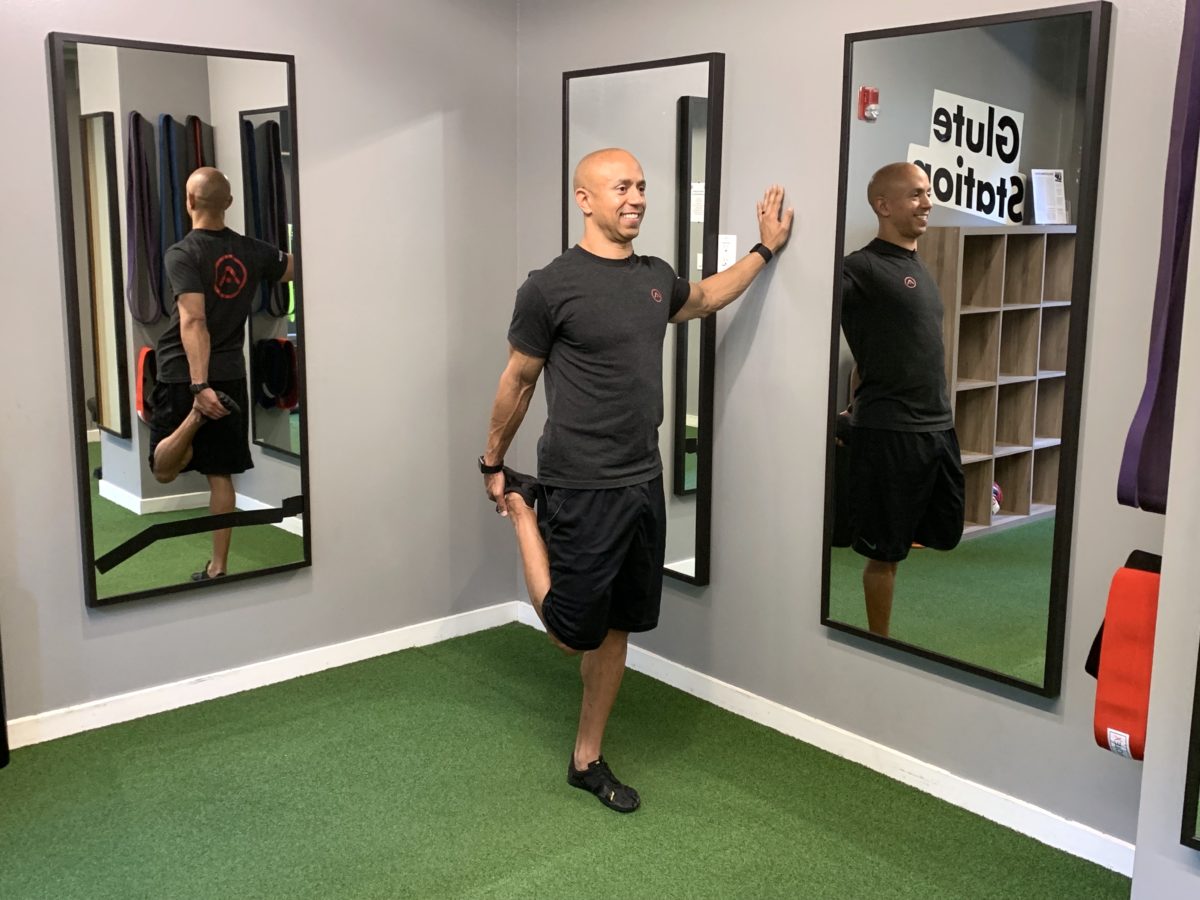The length of time you hold any stretch has a major influence on how your muscles respond to improve your flexibility and mobility.
But what is as, if not more, important than the duration of your stretch is how you measure that time.
If you rely on counting seconds or minutes, then you’re missing out on having a greater and longer lasting positive impact. Why is that?
Read on to learn the most effective and efficient way to measure the duration of your stretch.
The “Guardian of your Muscles”
To make any change in the length and stiffness in a muscle, you must work with your nervous system. That’s because it controls the function and level of tension in your muscles.
With this responsibility, it has built in defenses that are always on “red alert” against anything it senses as a threat to its status quo.
It doesn’t know or care if you’re trying to do something good for your body, as you’re trying to do when you stretch. If you go about it with too much, too soon, your nervous system will ‘fight’ you. And you’ll get nowhere.
Or if your stretch isn’t held long enough for the nervous system to put its defenses at ease, then the resistance will persist. And your results will be only temporary.
But if you give it the right combination of time and finesse, your nervous system will be way more receptive to letting go.
With duration, there’s a variety of times that you can hold a stretch. Each depends on your desired outcome.
For example, if you stretch before you train or play, the duration would be brief in comparison to after. The reason for this is that when you hold a stretch too long before an activity, it lessens the ability to recruit those muscles when you need them.
That’s why it’s important to pay attention to the amount of time necessary to get the results you want.
But if you keep track of time only by watching the seconds go by, you’ll get marginal results. That’s because there’s no finesse involved minding the clock.
Finesse involves minding your body in a way that comforts your nervous system. This allows your muscles to relax to an optimal length and level of tension. This is what promotes control over a full range of motion and allows a muscle to deliver its force potential.
The best way to finesse your stretch
When you breathe throughout a stretch, you soothe neural tension. That’s because breathing while you stretch has a calming effect on your nervous system. So it feels safer, instead of feeling under attack.
When you combine breathing with the right duration, you will get the biggest bang for your buck.
Here’s how. Slowly inhale and exhale. This equals one breath cycle. Each breath cycle will last five to ten seconds. If you know that you need to hold a stretch for thirty seconds, count four to six breath cycles. For a minute duration, hold for seven to ten breaths. And so on.
To learn what works best for your own breathing cadence, measure the time it takes you to breath in and out five times. Then, divide that by five. Going forward, use that number to keep track of time during your stretch.
Counting your breath cycles will also help keep you present to the level of tension in your stretch. And breathing will allow you relax it much sooner and without trauma to your nervous system.
Using your breath cycle to keep track of your duration is the best way to coax your muscles to a greater and safer range of motion.
In my Search and Rescue Mobility (SARM) program, I provide you with the optimal duration to hold each stretch. As well as the number of breath cycles to help you to stretch smarter and not harder.
To reach better success in your self-care practice, get started on your SARM program here.
As always, stay athletic.
Your coach,
Adam
P.S. If you missed my last post, “the number one mistake you make when you stretch,” check it out here.

